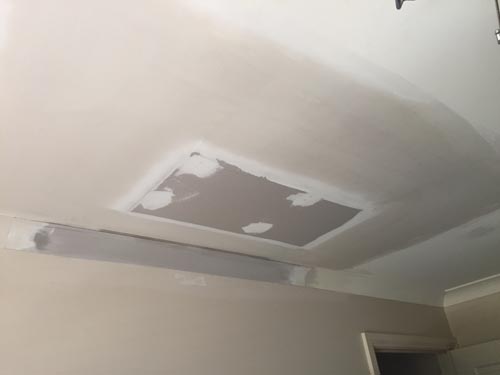If You're Plastering Large Holes Here is what you need to know
Are large plaster holes ruining the appearance of your house’s Walls? Are you worried about how to repair them? Here is a solution to your large plaster hole problems!
Large holes look odd and unesthetic. When these holes are not treated immediately, they can get bigger. But don’t worry, you can follow these nine (9) steps and get rid of unwanted large plaster holes.
“Large holes look odd and unesthetic. When these holes are not treated immediately, they can get bigger.“
Nine Steps for Plastering Large Hole Repairs:
Step 1: Plasterboards for Plaster Large Hole Repairs
Take a plasterboard square or rectangular shape depending upon the size and shape of your hole in the wall and use it to cover the void. The plasterboard should be thinner or be of equal thickness. The thinner plasterboard is preferable to the same size. Place the plasterboard in the wall and cover the whole hole. Now take a pencil and mark the board on the wall.
Step 2: Using Scrap Knife for Plaster Hole Repairs
Use a sharp knife and cut the marked piece of plaster to enlarge the hole size. It will make your hole a square or rectangular shape. See if there is any lath behind the opening. If there is no lath, then you have to attach support pieces.
Step 3: Screw the plasterboard
Take screws and fix them around the corners of the plasterboard. Make sure that screws pass through the laths. These screws will tighten the plasterboard with the back support. When you apply the layers, the plasterboard will not move from its position due to its stability.
Step 4: Cracks around the hole
The plasterboard will leave a few cracks or edges around the hole. These holes have to be covered by mesh tape or drywall tape. It will provide a smooth surface for the patching plaster.
Step 5: Using Jointing Compound for Plaster Large Hole Repairs
Now cover the plasterboard and mesh tape with the joint compound. Take some rapid patching plaster compound and mix it with water in a bucket. Keep adding water to the joint compound until you get cream-like consistency.
Step 6: Apply the First Layer
Apply the first layer of prepared paste smoothly and evenly around the board and its edges. Push the joint compound while applying over the wall and cover all the left spaces in the wall.
Step 7: Use Sandpaper on the plaster of the large hole repairs
Use sandpaper or a sponge to smooth the treated surface. This method will make your surface suitable for the second layer. Try not to use sandpaper too much. It will make your surface rough and undesirable for repair.
Step 8: Triple Coating
Opt for the same method and apply the second and third coats. All coats should not be thicker than adjacent sides of the wall. And don’t forget to use sandpaper or a sponge after applying every layer. It will make your surface more smooth and even.
Step 9: Primer and Paint
The final step is to use primer and paint to make your wall’s appearance homogenous. First, take the primer and use it thoroughly over the surface. The primer works as a binding layer between the old surface and the paint. The paint will work the rest to give your wall a final look.

If You’re Plastering Large Holes Here is what you need to know
If You’re Plastering Large Holes Here is what you need to know Are large plaster holes ruining the appearance of your house’s Walls? Are you

How is plaster used for Ceiling Repairs
How is plaster used for Ceiling Repairs? Ceiling plaster deteriorates in two ways, one by showing cracks all over the surface and the other by

Plaster Repairs for ceilings and avoiding these mistakes
Plaster repairs for ceilings: Avoiding these mistakes Plaster damages on the ceiling can get worse pretty fast if not repaired timely and fitly. Plaster on

Repairing the holes in Plasterboard walls and hollow doors
Plasterboard Repairs: Repairing the holes in Plasterboard walls and hollow doors Repairing holes in plasterboard and hollow doors requires precession and proper tools. For plasterboard

Quick Plaster Repairs to Walls
Quick Plaster Repairs to Walls Plaster repairs to walls is an easy task. It requires some tools and materials to make the appearance of your

Plaster Repairs And Common Mistakes
Plaster Repairs: Definition, DIY ideas, and Common mistakes Plaster repairs are essential for your home and office to keep it in good condition. It increases


